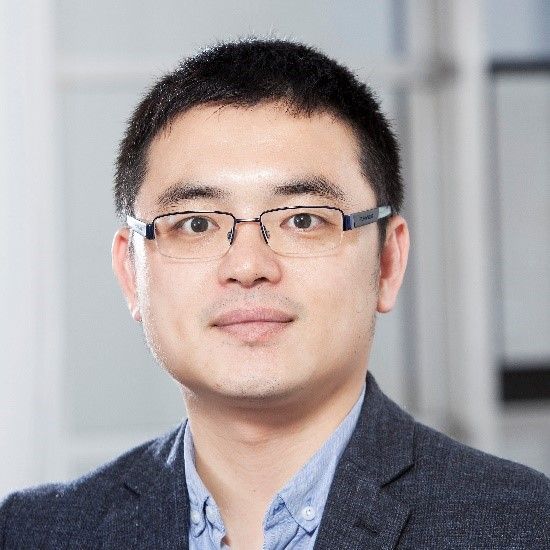
Time:10:00 am,February 21st,2023
Location:Lecture Hall on the 2nd floor of QMES
Lecturer: Xu Bin
Bio:
Dr. Xu is a full professor in materials and mechanics with a multi-disciplinary research interest covering smart surface, functional materials, applied mechanics and micro-engineering. Ben obtained his PhD in Mechanical Engineering at Heriot-watt University (Scotland) in 2011 and subsequently worked as a postdoc researcher at University of Massachusetts Amherst (2011-2013). Ben holds the title of visiting professorship in over 10 universities, including UCLA (US), TAMU (US), University of Alberta (US), University of Sydney (AU),), Amity University (UAE), Manipal University (India), etc. He leads the Smart Materials and Surfaces Lab (SMSL) in NU and chairs the Materials Characterisation & Properties Group in the Institute of Materials, Mining and Minerals (IoM3). He has published over 170 peer reviewed journal articles, 7 books (incl. chapters), 6 patents, given 90+ invited talks and won multiple awards (2016 Young investigator award from the International Polymer Networks Group, etc.). Ben is an associate editor for Advanced Composites and Hybrid Materials (SpringerNature), an editor board member for Polymers (MDPI) and Advanced Devices and Instrument (AAAS). He is a named expert in COVID-19 action database acknowledged by UK Parliament, with his work of ‘Masks for COVID-19’ archived in the WHO Covid-19 literature database. Ben is an elected Fellow of the Royal Society of Chemistry (FRSC), Fellow of the Institute of Materials, Mining and Minerals (FIMMM), Fellow of the Royal Society for the Encouragement of Arts, Manufactures and Commerce (FRSA), a chartered scientist and a chartered engineer. He has been an elected member in the Advisory Council in IoM3 from 2019, an elected member in the RSC Materials Chemistry Division Council from 2020, an elected member in the RSC Materials Chemistry Division Council from 2020, an elected member in the RSC Newcastle upon Tyne and North East Coast Committee from 2020.
Abstract:
Surface/interfacial engineering is an essential technique to explore the potentials of materials and fulfil new functions. We developed a topo-optical sensing strategy with ultra-high contrast by programming surface folds on targeted area with a thin optical indicator layer. A robust and precise signal generation can be achieved under mechanical compressive strains (>0.4). This approach bridges the gap in current mechano-responsive luminescence mechanism, by utilizing the unwanted oxygen quenching effect of Iridium-III (Ir-III) fluorophores to enable an ultra-high contrast signal. Moreover, this technology hosts a rich set of attractive features such as high strain sensing, encoded logic function, direct visualisation and good adaptivity to the local curvature. We also proposed a universal and conformal thin film technique enabled by the surface wetting empowered interfacial self-assembly. By tailoring the contact angle of nanoparticle (NP), a NP monolayer can be assembled instantly (within 5 s) with an excellent harvesting efficiency (up to 97.5 weight %). This strategy presents a universal applicability on various materials, e.g., nonmetal, metal, and core-shell structures, and can achieve a monolayer with same in-plane area as a 95 cm2 wafer in a single process, indicating great potential for scale-up manufacturing. Through a template transfer, we coated the surface of different substrates (plastic, paper, etc.) with the assembled film in a conformal and nondestructive “lift-on” manner and subsequently demonstrate fluorescent micropatterns. This self-assembly strategy has great implications in advancing thin film technology in a user-friendly and cost-effective fashion for applications in anti-counterfeiting, actuators, and wearable/flexible electronics. The above developments of a novel optical sensing technology (Nat. Comm. 2020) and a scale-up thin film device technology (Sci. Adv. 2022), has been featured by EPSRC and MIT Technology Review China, respectively. We discover an intriguing phenomenon that a dissolving drop rises in water after its volume shrinks to the certain level. After being placed on a substrate submerged in a polymer solution, the droplet starts to dissolve as itself react mildly to the acid in the immiscible surrounding solution and generates a hydrophilic soluble product. During the dissolution, water-rich microdroplets nucleate and grow on the droplet-substrate interface, and eventually merge with the external surrounding aqueous phase to set off the droplet. Two critical factors determine this jetting dynamics, the first is the stick-jump mode of small partially dissolved drop with a depinned boundary from merging microdroplets on the droplet-substrate interface. This finding unveils a new mechanism for autonomous drop motion, which may shed a light on future engineering applications such as, micro-fluidic, energy, robotics, device engineering, etc.
Text/Photo: Zhang Jiayu, Bi Jialong
Review: Cheng Yin

